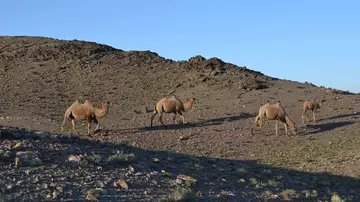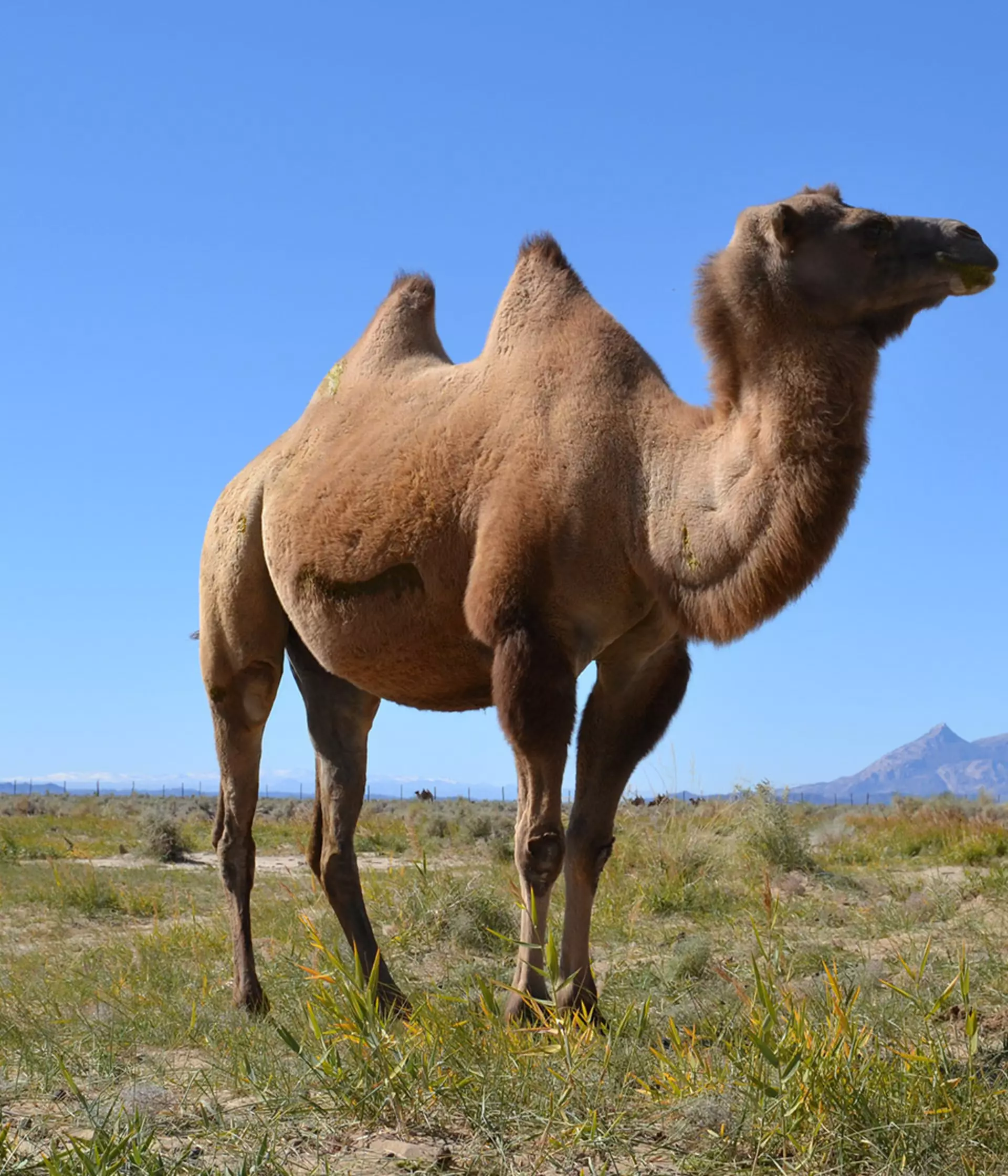
As climate change and human activity push their habitat to the limit, the critically endangered wild camel is one of the most endangered animals on the planet, surviving only in south-west Mongolia and north-west China. A solitary species, most of the remaining animals live in remote parts of the Gobi Desert in China or the south-western area of the Mongolian Gobi.
The wild camel is a separate species from the domesticated Bactrian camel. The Veterinary University in Vienna discovered the distinctness of the wild camel through genetic testing. In Mongolian the word used to describe the species is ‘havtgai, meaning ‘flathead’ in reference to their distinctive flat foreheads. Wild camels have adapted to drink salt water with a higher salt content than seawater. Scientists still don’t know how the wild camel can absorb and secrete the salt water; domestic Bactrian camels cannot do the same.
The conservation status of the wild camel
With an estimated population of less than 1,000 now remaining in the wild, it is the 8th most endangered large mammal on the planet. It is believed that approximately 600 survive in China and 450 in Mongolia. In 2002, the International Union for the Conservation Nature (IUCN) listed the wild camel as Critically Endangered.
Subscribe for ZSL conservation updates
What threats are the species facing?
Many factors threaten its survival, including habitat loss and degradation, desertification due to climate change, and hybridisation with the domestic Bactrian camel. There is still a great deal to discover in relation to this species, so vital research is required to better understand these threats and how they are impacting populations.
A recent study led by ZSL explains that public knowledge of the wild camel and the risks they face is still relatively lacking. Conflating the wild camel with the well-known Bactrian camel will lead to further misunderstanding of the species, meaning they are unlikely to receive the conservation attention they desire.
Our work in the field
ZSL’s Institute of Zoology (IoZ) is closely involved in the wild camel project and, along with our conservation partners, (the Wild Camel Protection Foundation, the University of Kent and the University of Veterinary Medicine, Vienna) is aiming to provide the scientific evidence necessary to inform a management plan for the species in Mongolia. In Mongolia, wild camels are only found within the Great Gobi Special Protected Area A.
An initial PhD programme will gather the information required to understand the threats wild camels face. Our research programme includes genetic evaluation of inbreeding levels within the captive population, remaining genetic diversity in the wild remnant population and levels of hybridisation across both. We are also working to obtain a better estimate of how many camels occur in the Great Gobi Special Protected Area A and how they use this area. Deriving this simple, yet crucial, information is enormously difficult given the scarcity of the camels and the vastness of their habitat.
The publishing of our recent study aims to raise awareness of the risks this species faces. One of the actions our study encourages readers to take is to use the accurate English common name: -‘wild camel’ instead of ‘Bactrian camel’ ideally alongside its scientific name (Camelus ferus) and, where appropriate, its indigenous name.
Off the back of this research, it has become evident that zoos and animal parks play a key role in educating the public about animals and their conservation needs. It is essential for them to respond to evolving understanding and definitions of species names and categorisations.

Estimating wild camel population using camera traps
In April 2019 a team of scientists, rangers and border patrol officers initiated a pilot study to estimate wild camel (Camelus ferus) abundance in the Great Gobi Special A Special Protected Area (GGASPA) Mongolia. Attempts by various organisations to estimate the population of wild camel numbers have been unsuccessful. This has been due to a number of difficulties including; the remoteness of habitat; the large size of the camel’s range; the harsh climate; low population number and political challenges. Although population estimate studies have been conducted these have come up against much scrutiny and a believable estimate has yet to be established.
A grid of 180 cameras monitored the GGASPA from April 2019 until October 2021. The images they captured are being used for data collection, modelling and subsequent estimate of the population. This project was conducted as a collaboration between WCPF, ZSL and Prague Zoo. More information on the project can be gained from Anna Jemmett.
This collective body of work will significantly enhance our understanding of these magnificent and Critically Endangered animals, helping us to develop practical actions to drive their recovery.
Impact
- Co-developing a species management plan for critically endangered wild camels in Mongolia.
- Reducing the probability of extinction of the critically endangered wild camel.
- Promoting wild camel as an umbrella species to protect many other threatened Gobi Desert species.
- 1 PhD studentship.
Key Species
Wild Camel (Camelus ferus)
The wild camel is only found in Mongolia and China. It is the only species of extant wild camel left and is critically endangered.
Our Partners & Sponsors
Partners: Wild Camel Protection Foundation (WCPF), DICE University of Kent; ZSL Mongolia; WCPF Mongolia Prague zoo; Knowsley Safari Park
Sponsors: Wild Camel Protection Foundation, Prague zoo
